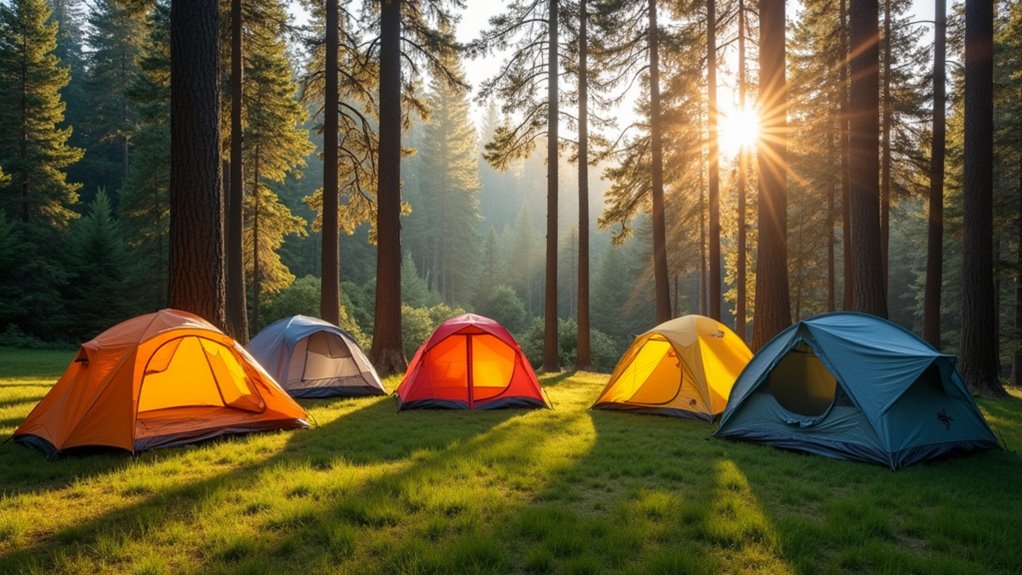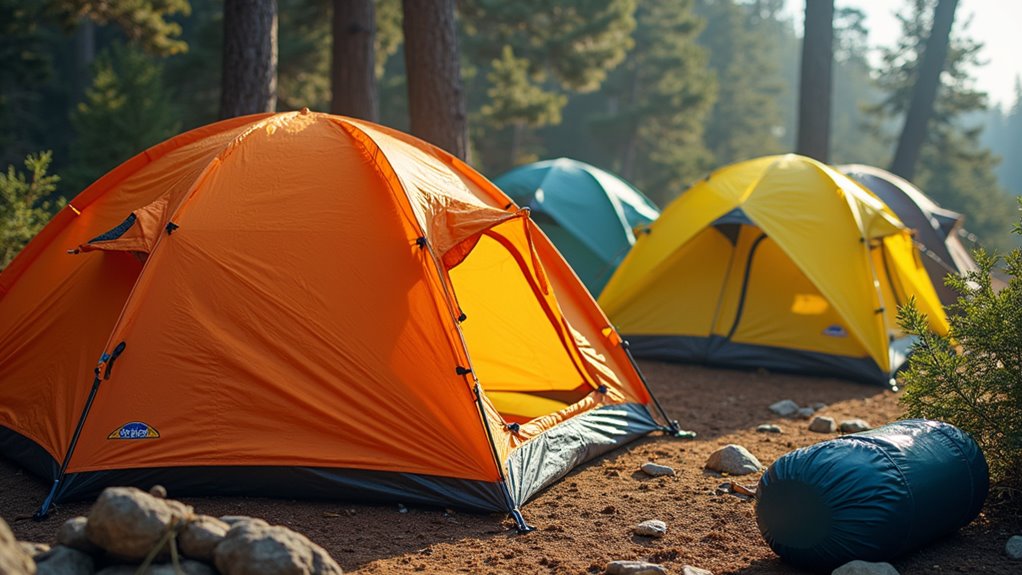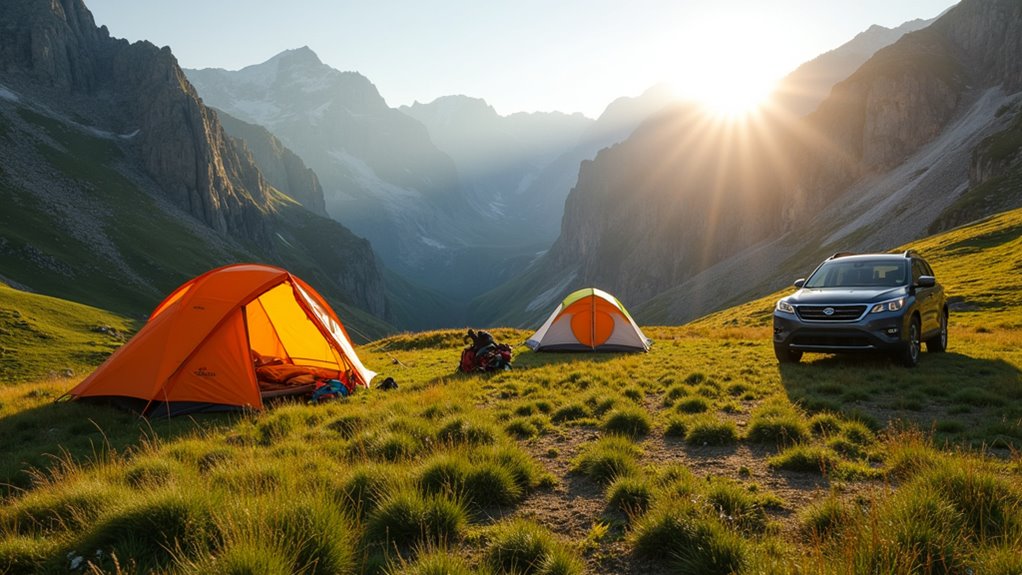Physical Address
304 North Cardinal St.
Dorchester Center, MA 02124
Physical Address
304 North Cardinal St.
Dorchester Center, MA 02124

Get expert tips for choosing camping tents that won't fail you—discover the hidden specs retailers don't want you to know.
You probably don’t realize that most tent failures happen because campers choose based on price alone, ignoring essential specs like hydrostatic head ratings and pole materials. When you’re selecting your next shelter, you’ll need to balance protection against weight, space against setup time, and durability against cost. The wrong choice can turn your outdoor adventure into a soggy, cramped nightmare—but the right approach will help you find that perfect tent without breaking your budget or your back.

Before you get swept away by flashy features or rock-bottom prices, you’ll want to nail down your specific camping needs first. Think about where you’ll camp most often – car camping allows heavier, spacious tents, while backpacking demands lightweight options. Consider your typical group size and whether you need extra room for gear storage.
Weather conditions matter tremendously. If you’re camping in rainy seasons, prioritize waterproofing over ventilation. For hot climates, focus on breathable fabrics and mesh panels. Don’t forget about setup complexity – some tents require engineering degrees to assemble in windy conditions.
Your budget should reflect how often you’ll use it. Weekend warriors can invest more per use than occasional campers. Match your investment to your actual camping frequency.
When selecting your ideal shelter, remember that the perfect camping tent combines all these factors to match your unique outdoor adventure style.
When storms roll in during your camping trip, your tent becomes your fortress against nature’s fury. You’ll need proper weather protection features that match your camping seasons and conditions.
Look for waterproof ratings of at least 1,500mm for the rainfly and 3,000mm for the floor. Sealed seams prevent water seepage at critical joints. Don’t overlook ventilation—condensation buildup creates miserable nights even in waterproof tents.
Proper waterproofing ratings and sealed seams are essential, but adequate ventilation prevents condensation from ruining your camping experience.
Three-season tents handle spring through fall conditions affordably. Four-season models withstand heavy snow and fierce winds but cost considerably more. Consider your typical camping calendar before investing.
Wind resistance depends on sturdy pole construction and guy-line attachment points. Aluminum poles offer better durability than fiberglass for frequent use. Your tent’s shape also affects stability—dome designs generally outperform cabin styles in windy conditions.
Plus, consider the tent’s capacity carefully as it directly impacts both comfort and weather resistance performance during your outdoor adventures.

Your camping style directly determines the tent specifications you’ll need, and getting this match wrong means carrying dead weight or suffering through cramped nights.
Backpacking demands lightweight tents under 3 pounds with quick setup times. You’ll sacrifice space for portability, so prioritize single-wall designs and aluminum poles.
Car camping lets you choose heavier tents with more headroom and storage space. Setup complexity isn’t critical since you’re not hauling gear miles. Look for steel poles and extra features within your budget.
Family camping requires spacious tents with multiple rooms or vestibules. Weight matters less than comfort and easy setup for inexperienced campers.
Motorcycle camping splits the difference – you need compact packed size but can handle moderate weight. Choose tents that balance portability with livability for your specific bike’s cargo capacity.
Before making any tent purchase, ask yourself the right questions about your preferred camping activities, frequency of use, and typical camping conditions to ensure you select the most suitable option.
You’ll absolutely conquer the wilderness once you’ve nailed down these tent essentials! Don’t let a soggy sleeping bag or collapsed shelter turn your adventure into a survival nightmare. Whether you’re pinching pennies or splurging on premium gear, matching your tent to your camping style will make or break your trip. Remember, you can’t put a price on staying dry when Mother Nature releases her fury at 2 AM!